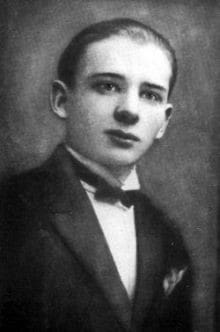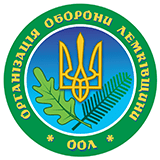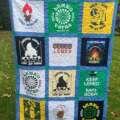
Lviv in the mid-1930s. A young man i s sitting at a writing desk, his pen dripping words inspired by fresh memories of his childhood:
Bird cherry trees, like smoking candles,
rise from the evening’s pious hand
The Lemkos are returning from Eventide,
walking pensively to their homes.
My highland country – it is impossible to forget your bird cherry trees
When the moon, like an oaten roll, hangs above them.
Yes, this is Bohdan Ihor Antonych, the poet who “first took a close look at the skies in the highlands, where you’re closer to the sun,” as he was finishing another poem for his collection Knyha leva (The Book of the Lion). The title of the book evokes an association with Lviv, but the author is a stranger in that city-he was born in the highlands, in the Lemko region, which straddles the picturesque peaks and valleys of the Western Beskyd.
From the perspective of the entire territory of Ukraine, the Lemko region is a kind of enclave populated by rusnaky , or Lemkos, wedged in between the Poles and the Slovaks, and cordoned off by state borders. Yet this small patch of land produced such brilliant men as the poet Bohdan Ihor Antonych, the primitivist painter Nykyfor (Epifanii Drovniak) from the village of Krynytsia (Krynica), and the creator of Pop Art Andy Warhol (Andrii Varkhola), whose parents came to the US from the Lemko village of Mykiv in the Presov (Priashiv) region of Slovakia.

The northern Lemko region (which is now in Poland), where Antonych was born and raised, was shattered by two waves of deportations: in 1944-45 people were exiled to the east, to Stalin’s collective farms in Ukraine’s southern steppes (whoever could manage fled back to the west, to Galicia) and in 1947, during Operation Vistula. Many ancient churches were razed to the ground or went up in flames. Villages emptied, and today the Lemkos are a minority in those villages to which the exiles and former inhabitants managed to return.
Nonetheless, the cultural phenomenon of the Lemko region has not vanished-it is alive in the natives of the Lemko Beskyd and their descendants, for whom the memories of the ancient past became the cornerstone of their spiritual abodes in foreign lands. Every summer Lemkos flock to the village of Zdynia for the Lemko Vatra Festival, the 25th edition of which was held in 2007. They stay here for at least three days and mingle with thousands of their fellow Lemkos near the bonfire ( vatra ) that is kindled on their native land. Traveling hundreds of kilometers, some Lemkos come to perform while others are just ordinary visitors. They arrive from all directions-the Polish-German border, the banks of the Dnipro River, Cherkasy, and the Poltava region. This is the geography of the new Lemko region.
For travelers who come here from the southeast either for the summer Vatra festival or at other times the gateway to Antonych’s roots is Gorlice where, in the words of the poet, “the red sun is on sale” at the fair. Here we turn onto the road that goes through Malastow and Zdynia and leads to the checkpoint on the Polish-Slovak border in Konieczna and then to the Presov region.
The bilingual Slovak-Ukrainian sign before Bekheriv, one of the border villages, indicates who lives there. The Polish law on national minorities, enacted four years ago, also ensures bilingual signs. But there are no Polish-Ukrainian signs because villages in the Lemko region and along the Sian River no longer have a population that is 20 percent Ukrainian, the formal condition for erecting signs in a minority language.
On the way to the village where Antonych was born we pass Malastow, climb the serpentine road to the top of the forest-covered Malastow Magura, turn right, go through Pryslip, and end up in Novytsia. At the very edge of the village, on the right side of the road, we see the wooden Dormition Church behind which is a little concrete stele with a plaque that reads: “The prominent Ukrainian poet Bohdan Ihor Antonych was born here on Oct. 5, 1909.” Novytsia can also be reached from the west by a narrow road that runs through bald mountain ranges and slopes, creating the impression that you are being raised right up to the sky. The night sky here is special, the kind you won’t see in the city. It is black, like the sooty interior of a chimney, and spangled with stars that remind you of fluffy cats cuddled up on a warm traditional Ukrainian tiled stove, seemingly within hand’s reach. All these things, like nothing else, bring out the poet in you. This is how the little boy matured into a great poet as he grew up among the poems, songs, legends, and fairy tales that his nanny told him.
The Novytsia of today, compared to the way it was in Antonych’s day, is a kind of submerged world with rare, recognizable islands projecting forward. The old house of the parish where the poet was born (his father Vasyl was a priest here) is gone. The village used to have a nearly one-thousand-strong Ukrainian minority, but now only a handful of families that managed to come back home after the political thaw of 1956 live here. They are maintaining St. Paraskeviia Church with its 19th-century, typically western Ukrainian Lemko wooden design and the chapel, where the freshly picked fruits of the earth and spring water are blessed on the feast of the Dormition.
The Lemko region is a land on the periphery of the nation that entered the 20th century as a stateless country. Even today it remains an area whose indigenous population, the Lemkos, are struggling with various forms of national consciousness. This pertains chiefly to those who live in Poland, because the Lemkos who were exiled to Ukraine have already merged with its national and cultural landscape. This is how it was in the past, too, and that is why the works of the writers who were born in the Beskyds exhibit typical Galician Russophilism in their efforts to write in a language approximated to Russian (so- called yazychie ). In our day this is manifested in attempts to create a separate Lemko literary language.
Antonych heard many Shevchenko poems from his nanny and entered the adult and creative part of his life in Lviv, where he studied at the university from 1928 to 1933. There, he was in contact with a strong and pronounced intellectual environment, made his entry into Ukrainian national literature, and wrote in one of his poems: “Antonych was a May beetle and lived on the cherry trees, whose praises Shevchenko once sang …”
The Lemko region, with all its beauty and complexity, became part of my life through Antonych’s poems. My first encounter with his works was in the village of Bilianka, which is in the vicinity of Novytsia. In the summer of 1983, after the first Lemko Vatra, I spent a few days in that village, living in one of the so-called “student cabins,” which attracted young people from all over Poland, predominantly ethnic Lemkos. Antonych’s poems (I think from the collected works published in the US) were ardently recited by Myroslav Chekh (not a Lemko) who was studying history at Jagiellonian University and later became a Ukrainian deputy in the Polish Sejm. A few months later, in October, I enrolled at the same university as a history student, and Cracow became another place where I encountered the national dilemmas of the Lemkos, who were studying in the local universities, and the beauty of Lemko girls, who inspired me to write many a poem.
All this was linked to my study of literary Ukrainian. Until that time I had had little contact with it and used only the Pidliashia dialect, which is full of archaisms, just like the Lemko variety. Immodest as it may seem to some people, in a sense I followed the same path as Antonych. In the classical Polish gymnasium in Sianik, where the future poet had studied, Ukrainian students had two academic hours of Ukrainian (called “the Rus’ language,” according to the official terminology of the day). Nevertheless, Antonych’s friends wrote that in his freshmen year in Lviv he still spoke the Lemko dialect with them. But after the publication of his second collection of poems literary critics, who were somewhat taken aback, emphasized the Dnipro-region coloration of the poet’s language.
Antonych’s first collection of poems entitled Pryvitannia zhyttia (Welcoming Life) was published in 1931 and was followed two years later by Try persteni (Three Rings). At this time the poet had just completed Slavic Studies at the university. Rejecting the teaching profession, he embarked on the difficult path of a professional writer. Sometimes he took part-time jobs as an editor. (He edited the literary and artistic monthly Dazhboh and the collection Karby ). During this period three more collections of his poems were published: Knyha leva (1936), followed by Zelena Ievanheliia (The Green Gospel), which would become the crowning point of his poetic work, and Rotatsii (Rotations), published post- mortem in 1938, one year after the poet’s death in July 1937. The cause of death was pneumonia-a minor illness today, but one that was often fatal before the invention of penicillin.
The Try persteni collection included Elehiia pro spivuchi dveri (An Elegy on Singing Doors) which, according to Dmytro Pavlychko, reveals the key to the poet’s entire poetic heritage: “Here the poet tries to encompass in one sweeping glance the past and present of his land, his ill-starred Fatherland. This is the source of the fire of the unconscious Shevchenko-style passion that fills Antonych’s other works with their brilliance, like the light of the vatra that glows in the eyes of the people warming themselves around it.”
This fire continues to shine in his metaphorically dense poems and in the real valleys of the Beskyd, its magical power constantly attracting new generations of readers and those who are not related to the Lemkos at all. Here, poetry is slumbering everywhere-not literary verse clad in form, rhyme, and rhythm but the poetry of nature. I saw it again when I returned to the Lemko region.
The days were sunny and the nights were clear. One pitch-dark night I looked up and saw poetry in the sky: a star-dotted meadow with shining, light-laden dandelions. It was a meadow that someone had flung from the earth into the sky. Later, when I reached for some of Antonych’s poems and read about the stars “fluttering on poplars” I thought that perhaps a part of the country he had discovered, a country born of the fire of the Lemko vatra , had also smiled at me, a Ukrainian from Pidliashia. So I doubt that anyone would argue with the fact that Antonych was also a May beetle on a cherry tree growing in Pidliashia.
***
This famous Lemko is also remembered by his fellow countrymen in the Lemko Union, part of the Union of Ukrainians in Poland. For a long time they have nurtured the idea of creating the Bohdan Ihor Antonych Center of Lemko Culture in Gorlice. At the 2007 Lemko Vatra President Viktor Yushchenko assured the assembled visitors that Ukraine would support this initiative. As an admirer of Antonych’s poetry and his “highland country,” it is my sincere desire for all Lemkos that this center will open by Oct. 5, 2009, the 100th anniversary of the poet’s birth. The residents of Lviv will probably erect a monument to Antonych at this time.
Source: https://day.kyiv.ua/en/article/culture/poet-lemko-sun-his-pocket


